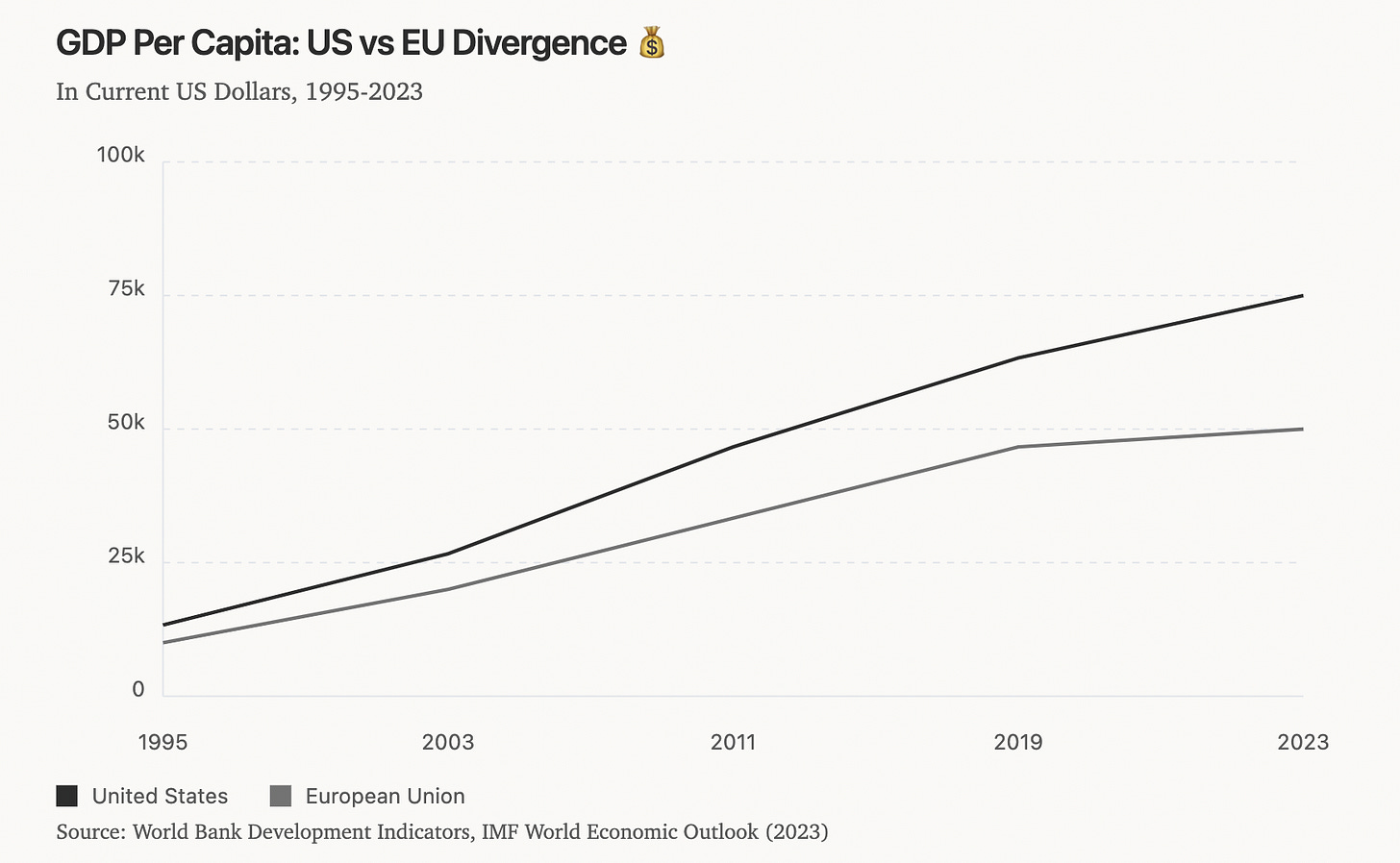European Innovation: Can It Escape Slow Death?
European competitiveness is suffering a slow death at the hands of tradition.
“The Europe is falling behind” this is the headline we have been seeing everywhere for a while now…
It’s true but the real question is why and whether it can be reversed?
Well, let's start with the basics: The US GDP per capita stands at $75,180 compared to the EU's $54,330 (2023 data). It can’t be simply because Americans work harder and Europeans are la…



